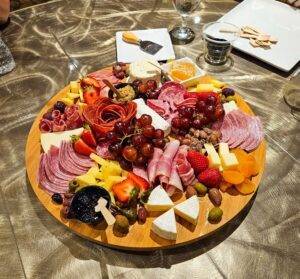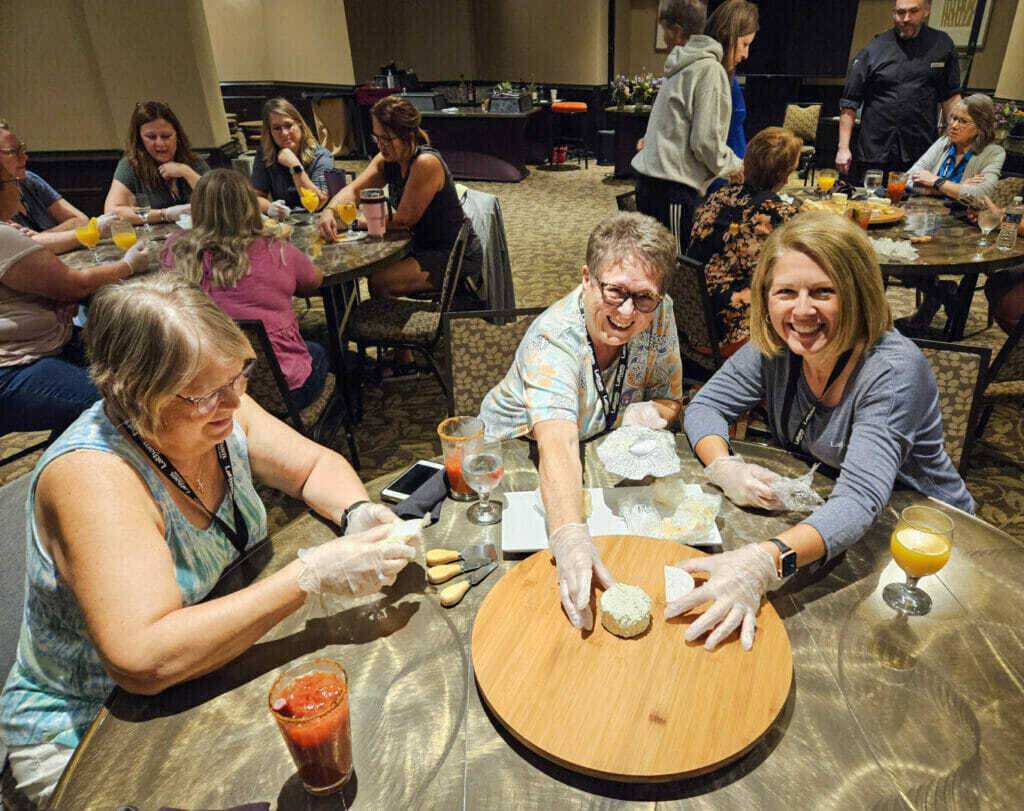If you’ve ever shared a charcuterie board, you know there are countless ways to prepare the meats, cheeses and garnishes. While there isn’t really a “right or wrong” way to serve a charcuterie board, there are some tips and tricks for creating a beautiful display. We treated spouses and guests at this year’s Dealer Kickoff to a special charcuterie workshop, hosted by a seasoned chef who revealed some of his “secrets of the board.”


“You can’t really mess up a charcuterie board too much,” says Chef Eric Baker, who worked at the Hilton Minneapolis/St. Paul Airport hotel for 32 years. “But you have to start by knowing your audience. Who are you feeding? What’s it for? Know how many ingredients you need, or how many boards you want to make. Do this first, before you even touch a slice of salami.”
Chef Eric retired from his head chef role at the Hilton two years ago, but when the hotel invited him back to lead Latham’s special charcuterie event earlier this month, he gladly accepted. He began the workshop by introducing his favorite ingredients to build a charcuterie board with flavors that pair well together and that most guests will enjoy.

(Note: Chef Eric recommends the “3 3 3 3 rule” for the perfect charcuterie board – choose three meats; three cheeses; three starches and three accompaniments.)
Here are ingredient samples for a solid starting lineup:
- Cheeses – goat cheese, an aged cheddar, a favorite bleu cheese, parmesan reggiano and soft Brie
- Other soft cheeses – ricotta, Boursin, etc. in small ramekins
- Meats – salami (dry or hard), prosciutto and pepperoni
- Fresh fruit – cherries, apple slices, pear slices and various berries
- Dried fruit – dates, apricots, figs, etc.
- Crackers – mix between salted, seeded and toasted varieties
- Jams and Mustards – any variety (Chef Eric chose a balsamic jam and brown mustard for our workshop)
- Olives or Pickles – green or black olives; small pickles only
- Nuts – almonds, cashews and pistachios are all good choices
After showing our group how to place the cheese and meats on the board, Chef Eric introduced another ingredient: honeycomb. He chose small blocks of raw honeycomb for each charcuterie board – but few of us knew exactly what to do with it. Turns out, honeycomb is 100% edible and is packed with the freshest, smoothest golden honey! Simply slice a piece of honeycomb and spread it on a cracker, a piece of cheese or a slice of fruit and voila! Your charcuterie board has been elevated to next-level goodness. (Thank you, Chef Eric!)
Finally, a highlight of the workshop was learning how to make a “salami rose” to decorate the charcuterie boards. It only took between eight and 12 slices of salami or pepperoni and the rim of a wine glass to produce flowers that were almost (almost) too pretty to eat.
Of course, our group did eat – and we even took some of our specialties home, where we’ll know just how to create the perfect charcuterie board for our next entertaining event!
